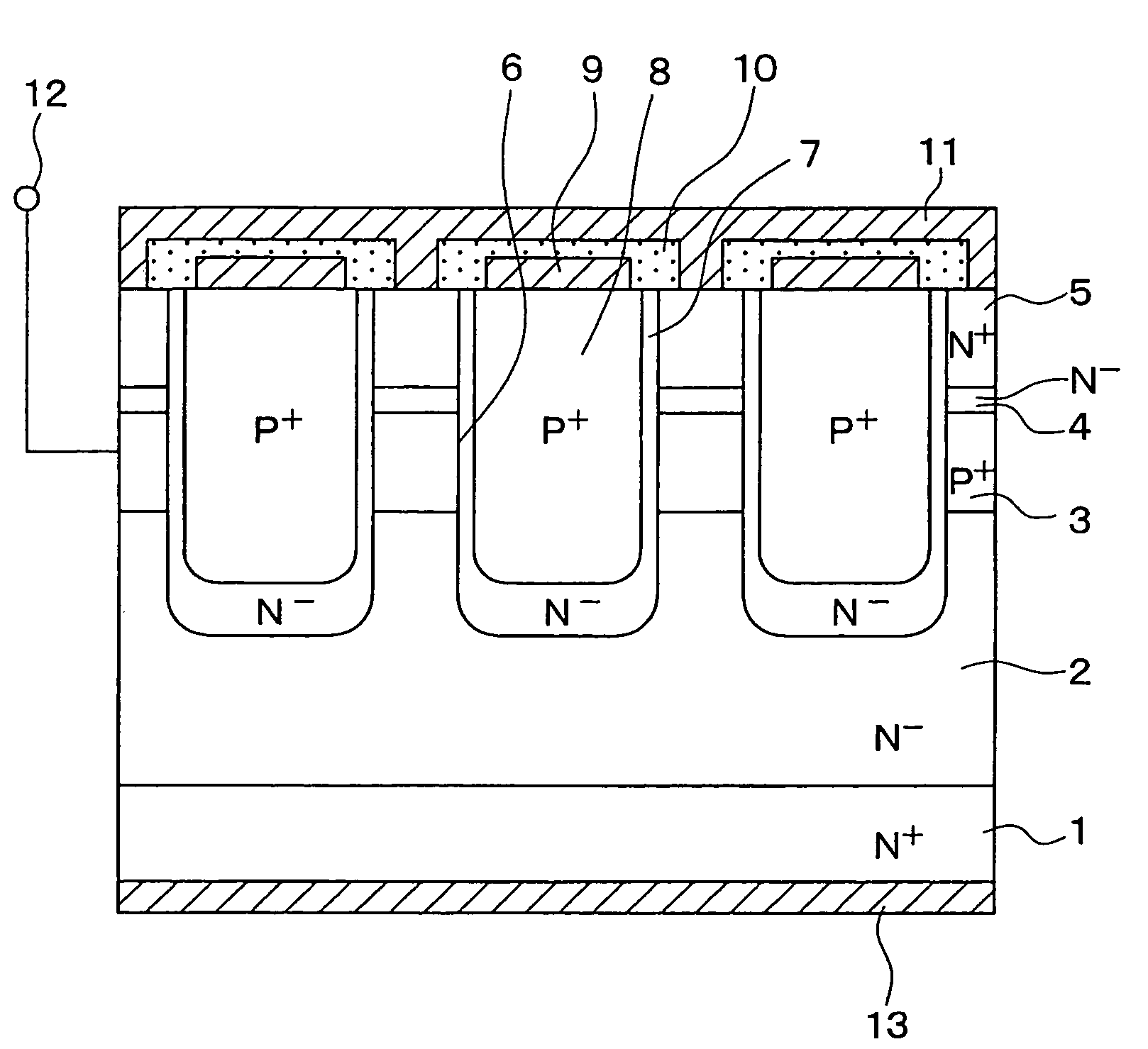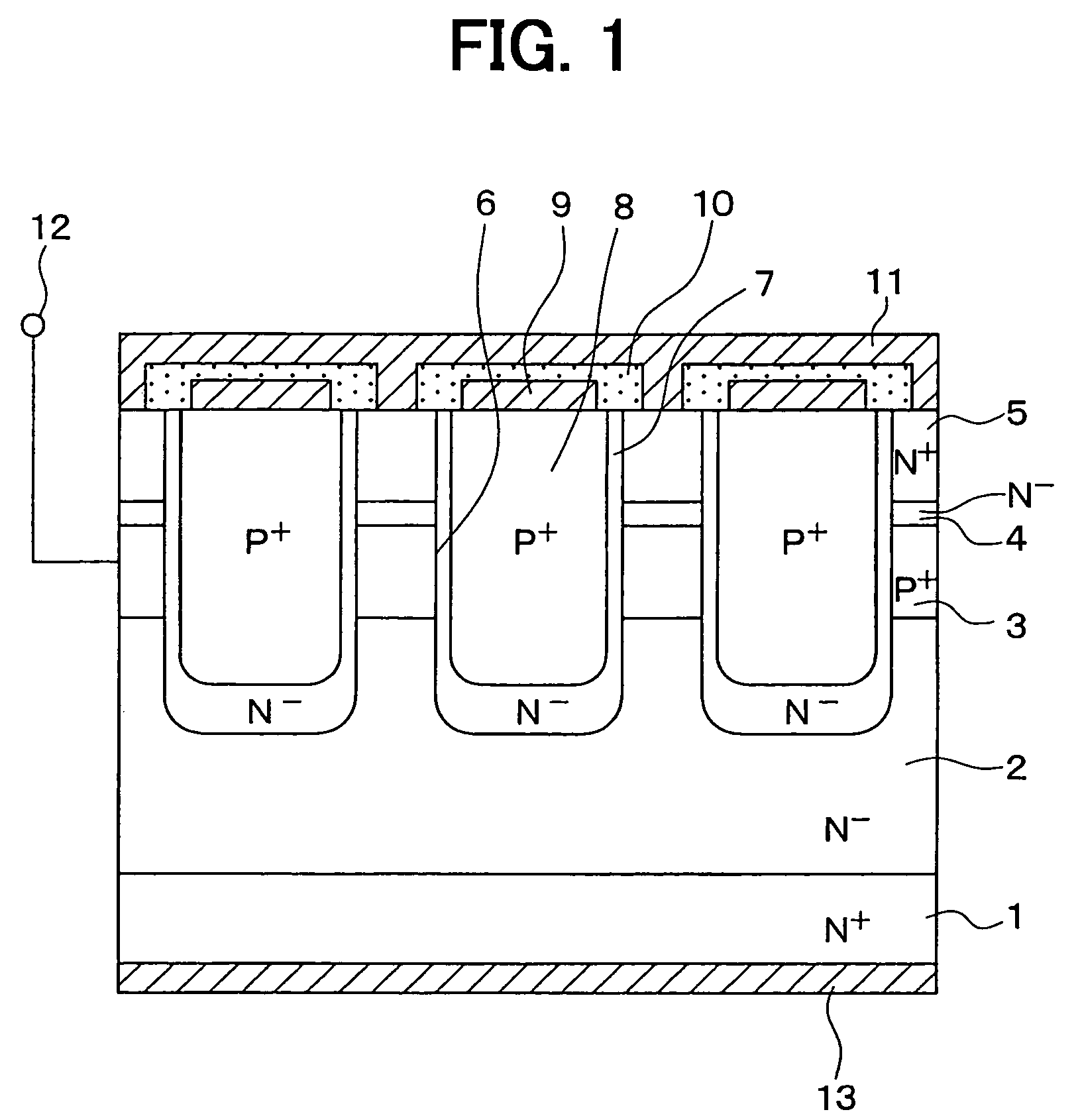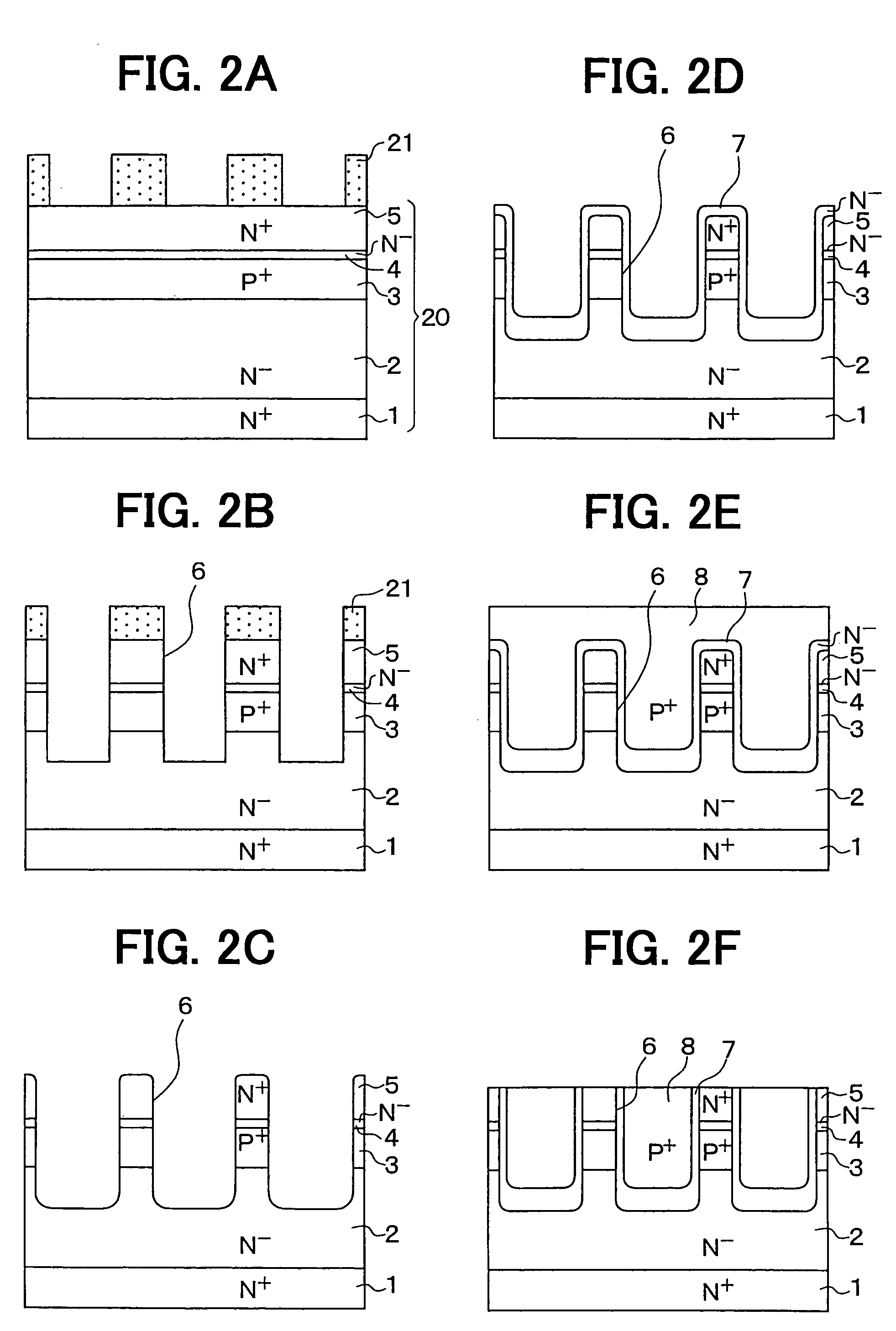Method for manufacturing semiconductor device having trench in silicon carbide semiconductor substrate
a semiconductor substrate and manufacturing method technology, applied in semiconductor devices, single crystal growth, chemistry apparatus and processes, etc., can solve the problems of inability to solve conventional techniques, the thickness of unnecessary epitaxial film removed in the etch-back step after the embedding step may surely exceed the depth of the trench, etc., to achieve uniform impurity concentration profile, excellent on-off performance, and uniform shape
- Summary
- Abstract
- Description
- Claims
- Application Information
AI Technical Summary
Benefits of technology
Problems solved by technology
Method used
Image
Examples
first embodiment
[0116]FIG. 1 shows a sectional structure of a J-FET provided in a silicon carbide semiconductor device according to a first embodiment of the present invention. The structure of the J-FET will now be described with reference to FIG. 1.
[0117]As indicated in FIG. 1, while an N+ type substrate 1 having a silicon carbide “(0001) Si” face has been employed and this N+ type substrate 1 is made in high impurity concentration equal to or higher than, for instance, 1×1019 cm−3, an N− type drift layer 2 has been formed on a major surface of this N+ type substrate 1, and this N− type drift layer 2 is made in low impurity concentration of, for example, 1×1013 to 5×1015 cm−3. Also, a first gate region 3 made of a P+ type layer has been epitaxial-grown on the surface of the N− type drift layer 2. This first gate region 3 is made in high impurity concentration of, for example, 5×1017 to 5×1019 cm−3.
[0118]Further, an N− type region 4 has been epitaxial-grown on the surface of the first gate region ...
second embodiment
[0156]Next, a description is made of a semiconductor device manufacturing method according to a second embodiment mode of the present invention. Since this second embodiment mode is substantially same as the first embodiment mode, different points from those of the first embodiment mode will now be mainly explained.
[0157]FIGS. 4A to FIG. 4E are sectional views for schematically showing steps for manufacturing a semiconductor device according to a second embodiment of the present invention. These sectional views indicate steps for manufacturing an N− type channel layer 7 and a P+ type of a second gate region 8 of a trench type J-FET similar to the first embodiment mode. In this second embodiment mode, a selective epitaxial-purpose mask is not formed in a trench 6 of a transistor cell portion, but is applied only to a trench of an alignment key region. As a result, an alignment of an embedding epitaxial step and alignments of an etch-back step and succeeding steps is secured.
[0158]Fir...
third embodiment
[0166]Next, a description is made of a semiconductor device manufacturing method according to a third embodiment mode of the present invention. Since this third embodiment mode is substantially same as the first embodiment mode, different points from those of the first embodiment mode will now be mainly explained.
[0167]A third embodiment of the present invention is realized by executing the first embodiment mode, and by changing only a growth condition in an epitaxial step. That is, while such an etching gas as hydrogen chloride is mixed with SiH4 and C3H8 corresponding to the material gas, and H2 corresponding to the carrier gas, an epitaxial growing process is carried out. Concretely speaking, although depending upon a substrate temperature, while hydrogen chloride gas in approximately 1 to 5% of a hydrogen gas flow rate is mixed with the material gas and the carrier gas, the epitaxial growing process is carried out.
[0168]Since such a gas having the etching effect is conducted, ev...
PUM
| Property | Measurement | Unit |
|---|---|---|
| trench slanting angle | aaaaa | aaaaa |
| aspect ratio | aaaaa | aaaaa |
| temperature | aaaaa | aaaaa |
Abstract
Description
Claims
Application Information
 Login to View More
Login to View More - R&D
- Intellectual Property
- Life Sciences
- Materials
- Tech Scout
- Unparalleled Data Quality
- Higher Quality Content
- 60% Fewer Hallucinations
Browse by: Latest US Patents, China's latest patents, Technical Efficacy Thesaurus, Application Domain, Technology Topic, Popular Technical Reports.
© 2025 PatSnap. All rights reserved.Legal|Privacy policy|Modern Slavery Act Transparency Statement|Sitemap|About US| Contact US: help@patsnap.com



